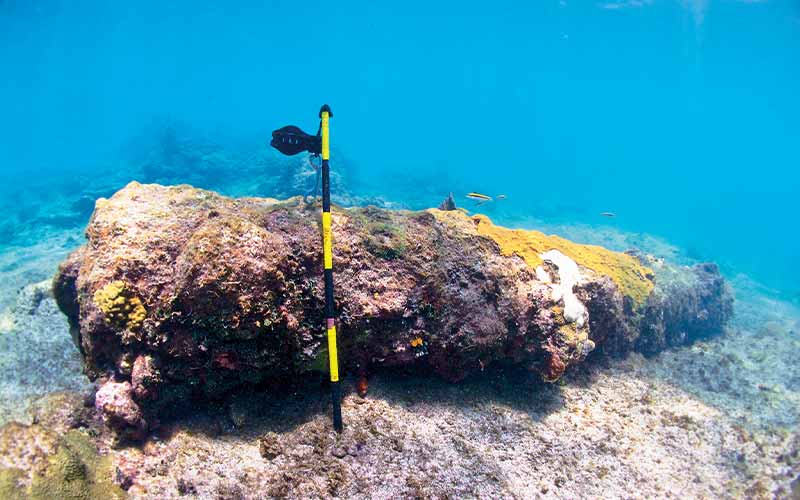In the summer of 1698, William Kidd was a hunted man. A few months earlier, he and his crew of rowdy seamen had seized a choice prize off the coast of India, a 400-ton vessel named Cara Merchant. When Kidd commandeered the Cara Merchant, he believed he was acting within his authorization as an English privateer. Kidd found out he was wanted for piracy a few months later when he made landfall in the Caribbean. After weeks of trying to hide out in the Greater Antilles, he eventually decided to journey to New York in an attempt to clear his name. He left the Cara Merchant (now renamed the Adventure Prize) anchored near tiny Catalina Island, just off the southeastern coast of the Dominican Republic. Unfortunately for Kidd, he became a pawn in a political power play and was hanged. As the Cara Merchant‘s remaining crew fled the ship, they looted it, set fire to it and put it adrift to burn.

espite alluring rumors of sunken pirate treasure, no search for the wreck ever met with success. A few years ago, however, more than three centuries after the ship sank, a snorkeler in 8 feet of water and only 70 feet off the shore of Catalina Island recognized a reef structure as a pile of cannons. The find was reported to the Dominican Republic’s National Office of Underwater Cultural Heritage (ONPCS), which invited a team of underwater archaeologists from Indiana University to investigate. The Indiana team, under the leadership of Professor Charles Beeker, began excavation in 2008. Archival evidence already pointed to the wreck being Kidd’s ship, and further doubt was removed by evidence the team uncovered.
Since 2008, the U.S. Agency for International Development (USAID) has awarded Indiana University $300,000 to create the Captain Kidd Underwater Archaeological Preserve and turn the site into a no-take, no-anchor “Living Museum of the Sea.” This protected area will preserve the cannons, anchors and rare coral living in the area. Strong partnerships with local government and conservation agencies have been formed, and an interpretative shelter with plaques to guide visitors around the site along with a museum-quality replica of a recovered cannon, mooring balls and walking paths have been created. Beeker and Dominican government officials dedicated this “Living Museum” on May 23, 2011.
© Alert Diver — Q3 Summer 2011